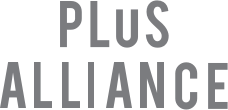Skip to main content

- NMR first observed by two independent groups: Purcell (Harvard) (Paraffin, 30 MHz); Bloch (Stanford) (water, 8 MHz)
- 1950: First pulsed experiment
- 1951: Observation of chemical shifts
- 1952: Purcell and Bloch share Nobel Prize for physics
- Late 1950's: Commercial spectrometers available
- ca. 1970: FT technique introduced, pioneered largely by Ernst. 13C NMR routine
- 1971: 2D NMR proposed by Jeener
- post 1971: Explosion in experimental techniques in one, two or more dimensions. Availability and development of superconducting magnets allows use of much higher fields. Concurrent advances in computing technology allows for data manipulation in reasonable amounts of time.
- 1991: Ernst wins Nobel Prize for chemistry
- 1999: State of the art applications include solving the 3D structures of proteins up to 40 kD using 2, 3 and 4D NMR. Machines operating at 750 MHz for 1H are commercially available (cost ca. $2.5M) (900 MHz machines will be commercially available soon, estimated cost $10M - what a bargain!). Typical computers used require about 20 seconds for double Fourier transformation of a 2D data set 32 Mbytes in size.
Beginners:
- "Nuclear Magnetic Resonance" Oxford Chemistry Primer No. 32, P.J. Hore, Oxford University Press, 1994. (Cheap, thin, readable, green and good)
Intermediate:
- "Understanding NMR Spectroscopy" 2nd edition by James Keeler
- "Modern NMR Spectroscopy", J.K.M. Sanders and B. K. Hunter, Second Edition, Oxford University Press, 1993. (A very readable text at a level slightly lower level than Derome)
- "Modern NMR Techniques for Chemistry Research", A. E. Derome, Pergamon Press, 1987. (Largely out of date now, but one of the best NMR books ever)
- "NMR Spectroscopy", R. K. Harris, Pitman Books, 1983. (A more mathematical approach)
Practical:
- "150 And More Basic NMR Experiments : A Practical Course", Siegmar Braun, Hans-Otto Kalinowski, Stefan Berger, John Wiley and Sons, 1998. (How to run more experiments than you can poke a stick at by yourself, mostly with Bruker spectrometers in mind)
Advanced:
- "Spin Dynamics - Basics of Nuclear Magnetic Resonance" by Malcolm H. Levitt
- Two-Dimensional NMR Spectroscopy : Applications for Chemists and Biochemists", W.R Croasmun and R.M.K. Carlson, VCH publishers, 1994. (Graham's personal recommendation for those late nights on the spectrometer)
- "Carbon-13 NMR spectroscopy", E. Breitmaier and W. Voelter, VCH publishers, 1987. (Good for 13C chemical shift and coupling data)
- "Principles of NMR in One and Two Dimensions", R. R. Ernst, G. Bodenhausen and A. Wokaun, Oxford University Press, 1986. (A bible of theory. Highly mathematical, for the extremely serious only!)







